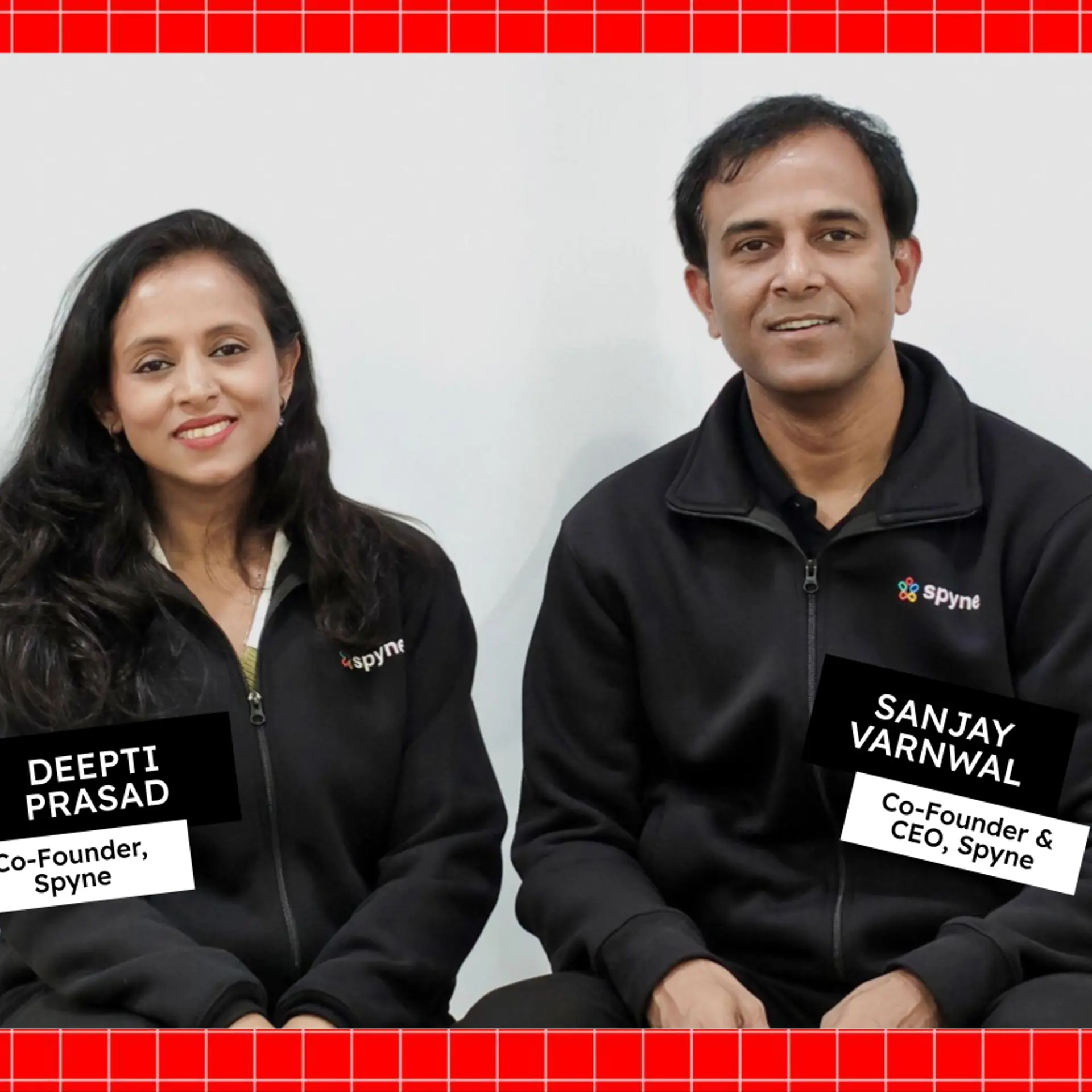What is ultra drip and how can you tap this insane marketing technique?
In Part One of a three-part series that delves into some of the latest techniques in growth marketing, we see why Ultra Drip is an effective way to get your audience’s attention.
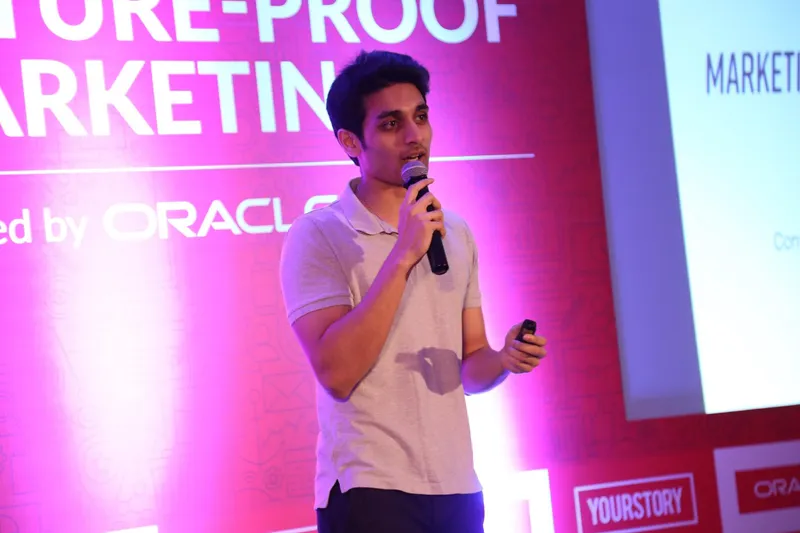
Just last week, I was invited to speak at the Future Proof Marketing event hosted by Yourstory and Oracle. It was a fun night for everyone on stage talking about their individual experiences growing their own companies and products. I spoke about our own journey at Avalon Labs and it’s flagship product, Enkidu - a decentralised global collaboration platform. Instead of grazing the surface, I presented a more tactical approach to how we do marketing on a day-to-day basis at Avalon, and some of the trends we’ve been keeping an eye out for. I hope it’ll help at least a few people reading this post derive inferences from our experiments.
At Avalon, we believe in experimentation, observation, and repetition. Almost half our revenues (we reached profitability a couple of months ago) are pooled back into running experiments or taking risks. A lot of the older, more tried and testing marketing techniques either don’t work, or are at the risk of being automated. If not for constant innovation, we’d simply be another voice lost in the crowd. Without much further ado, let me run you through some of the growth hacks that have worked for us and, in the end, some shocking insights into where the future of marketing is headed.
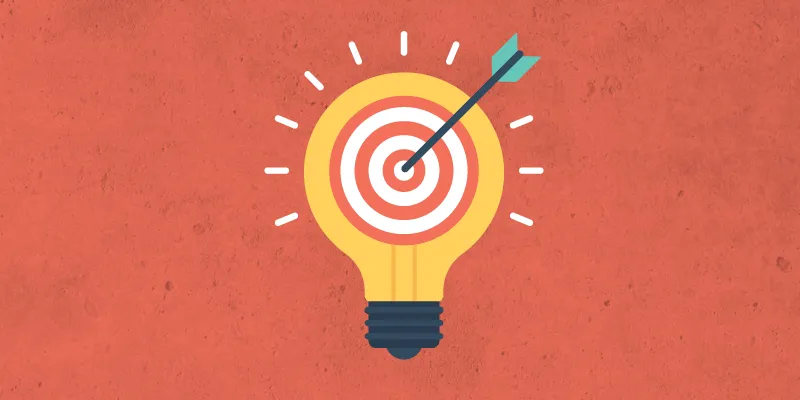
This is part one of a three-part series on the latest techniques in growth marketing.
Ultra Drip
Most people who made it to the event wanted me to send them an email on this specific technique. In order to understand why this technique works, you need to accept one hypothesis as gospel - “For products that cost less than $1,000 a year, the marketing and sales roles are merging.”
Think about it.
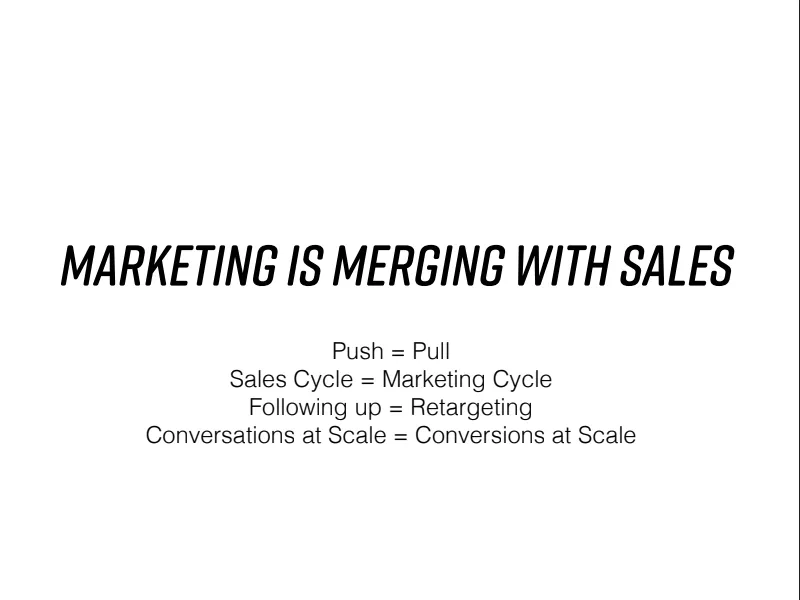
That’s the slide on my presentation that lingered on screen the longest. Today, you can’t just put banner ads or billboards and expect people to just go out and buy your product. You need to first give away enough and then eventually ask for something. You can draw parallels between following up when it comes to sales and retargeting in marketing. Attention spans have now become so low that you need to get in front of your potential buyers multiple times at the slightest hint of interest. Conversations at scale have become akin to conversions at scale.
We’re going to follow a dual approach of targeting the same set of customers across both Facebook and email. Since most of Avalon’s target audience is in the US, this technique works spectacularly well. In India, however, email usage is lower and you will have more success if your target audience is employed and maintains a professional presence.
For starters, we’re going to create four sequences of content that can be sent over email and another four sequences of content that are sent over Facebook Ads. Content marketing is the best form of marketing right now.
Email content can be cheat sheets, e-books, webinars or free trials. Facebook content can be social validation, Vlogs, testimonials, or the same cheat sheets and e-books. Whatever you do, do not put a price tag anywhere. Here’s an example of an e-book Intercom uses very successfully: https://www.intercom.com/starter-kits/customer-retention. You might wonder why this is even important.
Remember, we’re trying to build the potential customer’s trust. This is done not just by sending them content, but also by establishing yourself as an authority. You’re letting your audience know that you know your stuff. You need an email list of at least a thousand quality emails. These will be fed into two places - Facebook Custom Audiences, and an email automation tool.
Finding emails can be done via LinkedIn navigator and a tool called Snov.io. Most people who can afford to buy the things you are selling are on Linkedin and work at certain companies (that’s why this technique works best when you’re selling to a working crowd). Create a buyer persona for that person and try to imagine what type of companies they’d work in. For example, buyers for CalmIndia.com, a mental health tool we run, are mostly junior to mid-level employees working at MNCs.
Now that you’re familiar with what we need to do, let’s get to the steps.
Step 1: Find people and get their emails
To do this, you’ll need LinkedIn Sales Navigator. It costs between Rs 3,900 and 5,000 per month depending on where you are from and how big your team is. This is absolutely critical to pulling this technique off. Once logged in, you should be able to see something like this:
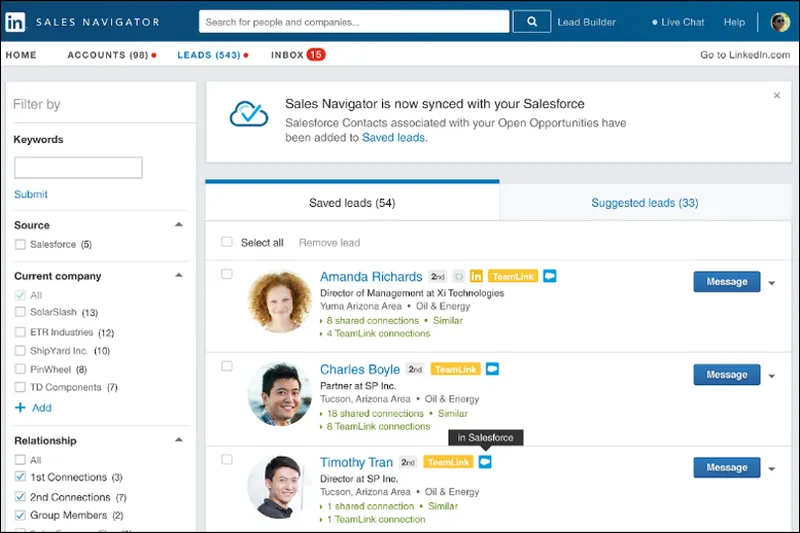
Next, head over to Snov.io and buy a one-month subscription (it’s fairly cheap). Once you install the extension, you should be able to see something like this below. What Snov does is find the emails of everyone you select on LinkedIn Sales Navigator. How it does this is a topic for an entirely different blog post, but for now let’s accept that there’s some backend magic going on.
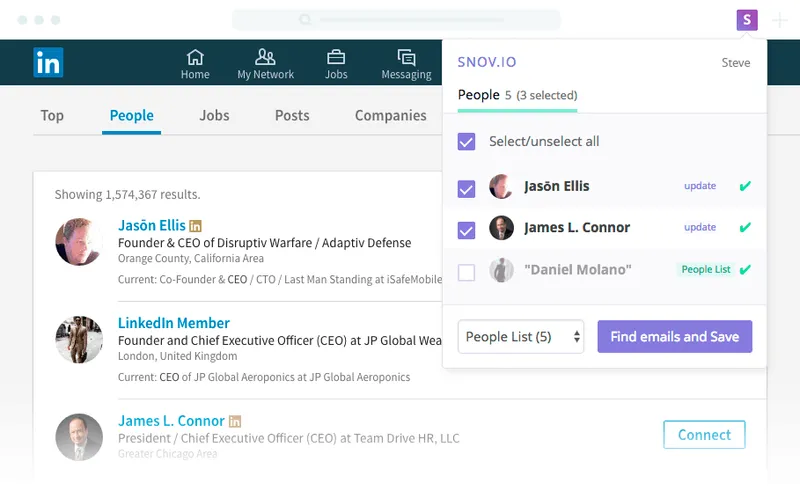
For a few minutes, put yourself into the shoes of someone who would buy your product. Where are they based out of? What is their median annual income? What is the probability they will be a senior executive? What’s the probability they work in the legal field?
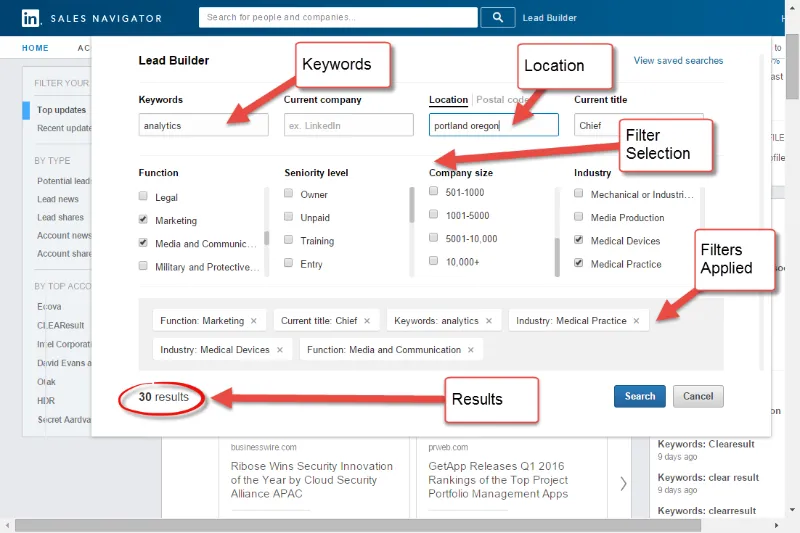
You should see a list of people and their emails. Export at least thousand emails to a comma separated values (CSV) file using Snov. You should have a nice little Excel sheet with at least the first name, second name, company name and email.
Step 2: Load up the emails into Facebook Custom Audience
While Facebook lookalike audiences get a lot of attention, we’re going to use Custom Audiences for this one. I’m not a marketeer by training, but this stuff is so simple and requires just basic common sense and the ability to use a computer and Facebook.
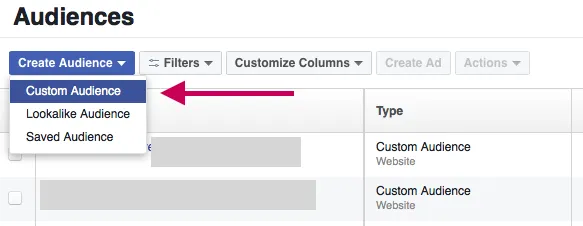
Load up your exported email list, and start creating advertisements. Most people who use Facebook do not use their professional email IDs, but Snov is smart enough to also get their personal IDs sometimes. Either way, you might still get “no hits” on your audience, and that’s fine - we’re going after the best subset of your exported audience.
I’m not going to run you through setting up Facebook ads, but here is an official resource you can use. Set up four ads, each with one content piece. It could be anything from cheat sheets to a video on how your company functions. I used to love explainer videos, but these days, customers want to see real people!
Step 3: Load the same emails into an email automation tool
Email is super powerful, and I wouldn’t be where I am today if I wasn’t a user of email.
Back until 2016, I used to send one email, and that was the end of it. If the recipient didn’t reply, I’d miss out on opportunities to do business together. In late 2016, I stumbled upon email sequencing tools (also called email cadence tools or email automation tools), and the way I approached emails completely changed.
Fundamentally, the people you want to reach out to are busy. The often miss the first email you send them, and sometimes even the second. At Avalon, we send out a series of four emails, spaced out by three days each. To do this, we use an email automation tool. Mailshake is the easiest and simplest one to use.
Write your first email, and then keep adding “drips”. Drips are follow-up emails sent after a particular delay, and only sent if there’s no reply from the recipient. If there’s a reply, then the tool stops, and you’ve got to take the conversation forward by yourself. Each drip is a pitch, so craft the pitch carefully. After you load up your list of emails and draft a four-drip email, hit the send button.
Compared to Facebook Ads, stay slightly more direct on email. Facebook should be more about giving away. The dual approach works well because they’re seeing you in multiple places and you aren’t explicitly asking for money (yet). You are giving value in the form of content, but not taking anything.
The barrage of content and emails will eventually get to them. They will either buy your product/service, or unsubscribe/opt out of your ads, but they will remember you.
There’s a drip with a three-day delay because you need to catch them at a time when they really need your product/service. An example is buying a vacuum cleaner. You might not have an immediate need for it, but if you see an ad in the morning for a vacuum cleaner and you come back to a dusty house in the evening, it might trigger interest and the memory of seeing the ad earlier in the day helps. If a person does not have the need to use your product in a 12 day period (4 drips * 3-day delay), either increase the delay or shut down your business. Some products like real estate need a long delay (sometimes even a few months). If you’ve tweaked your messaging a few times and still don’t see traction despite increasing the delay between drips, you may want to move on to another idea - you haven’t found product-market fit.
You can get anything from press to sales with Ultra Drip. If they ever click on your website’s link on either email (tracked via email automation tools) or Facebook (via Facebook Pixel), then start retargeting them. Mailshake has the ability to track when someone has visited your website. It’s the same case with Facebook. Once you know someone has visited your website, start using a different approach - retargeting.
This is what we call this rising escalations. Each positive action performed by the user is a trigger to retarget them more and more aggressively.
Eg: User clicked on your link? Spend five percent of your total budgeted per user retargeting budget. Clicked on Webinar? Escalate to 15 percent.
Signed up for Webinar? Escalate to 10 percent.
Watched >50 percent of your vlog video? Escalate to 70 percent.
Abandoned cart? Escalate to 90 percent!
After you do this for a while, you’ll understand what level of escalation works best for what type of products, and what your per user retargeting budget should be. In my presentation, I also made two forward-looking statements:
First, that Facebook messenger is the next email, except disguised as a social platform, and you can send opt-ins all sorts of content. If you can get your potential customers to opt in, you can keep sending them all sorts of drips.
And second, more grimly, is that sales rep roles will disappear within four years for products priced under $1,000/year. The level of automation we’ve seen in the sales tech field means that in a few years sales reps for small products will be completely eliminated. Bigger ticket products will still require face-to-face meetings, so those reps, like the ones doing enterprise sales, will still be around.
The reason Ultra Drip works is simply because you’re reaching out to the same person, multiple times, on multiple channels. You’re taking up mindshare, and in world where’s there a lot of noise, getting attention multiple times works.
(Disclaimer: The views and opinions expressed in this article are those of the author and do not necessarily reflect the views of YourStory.)







